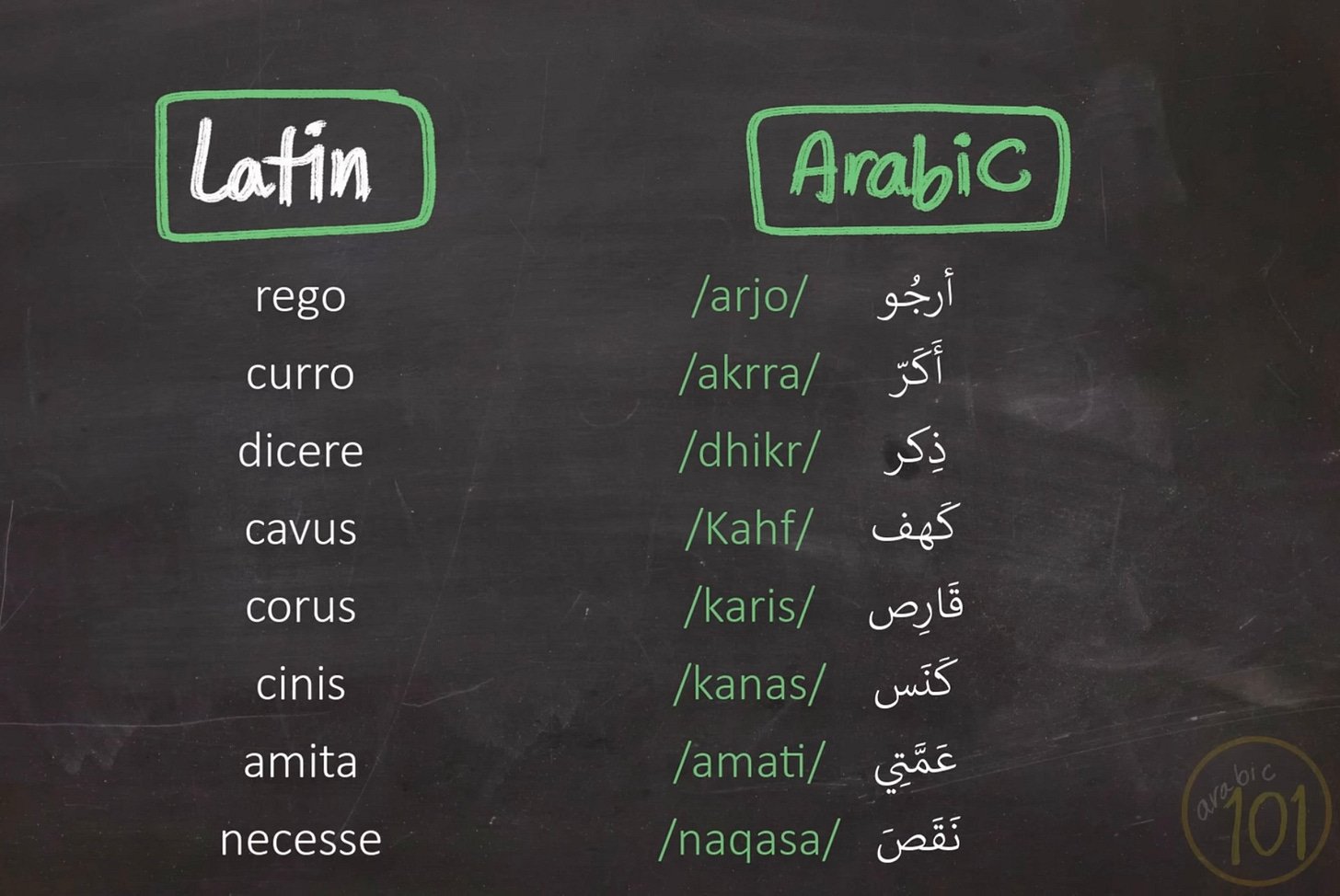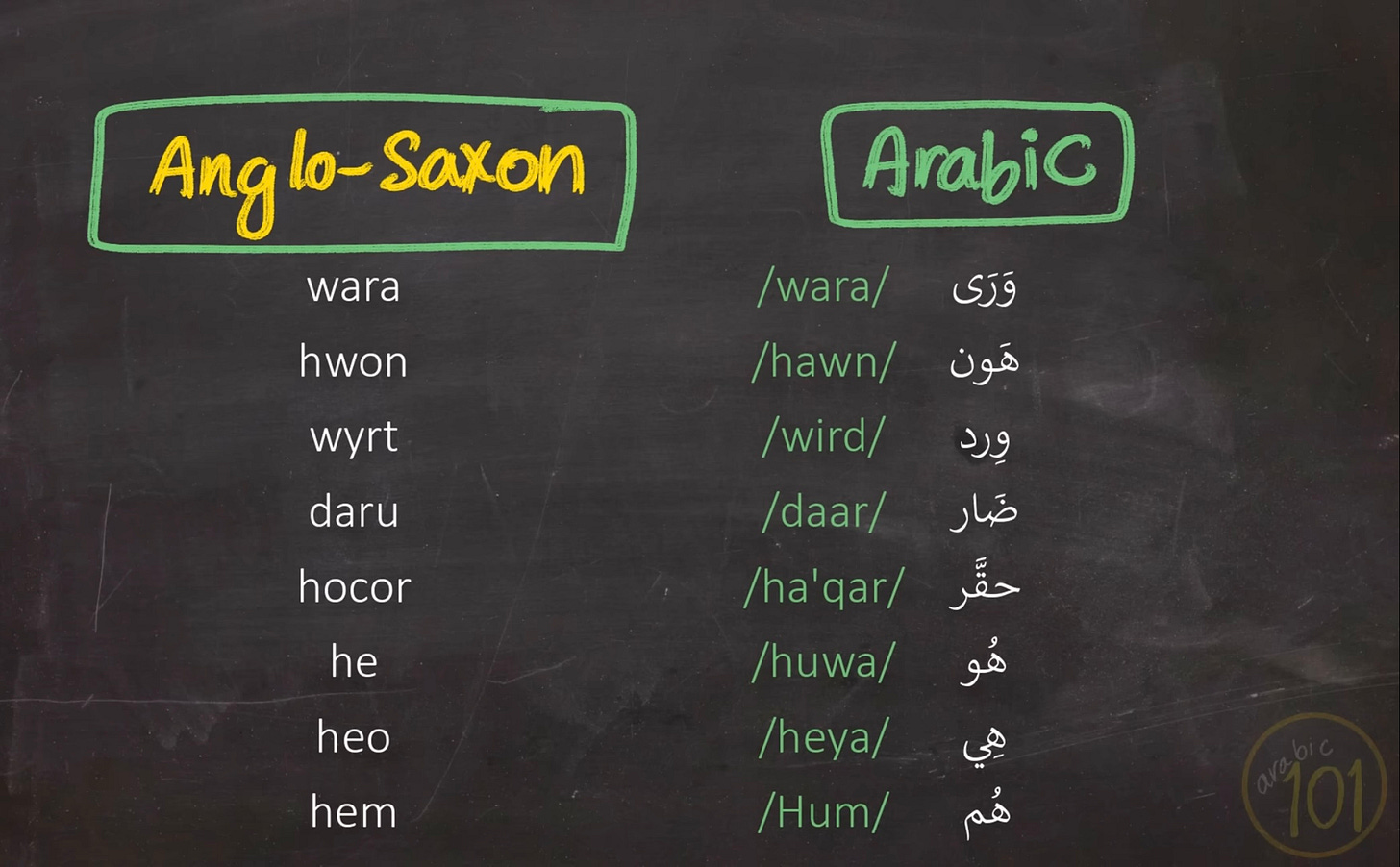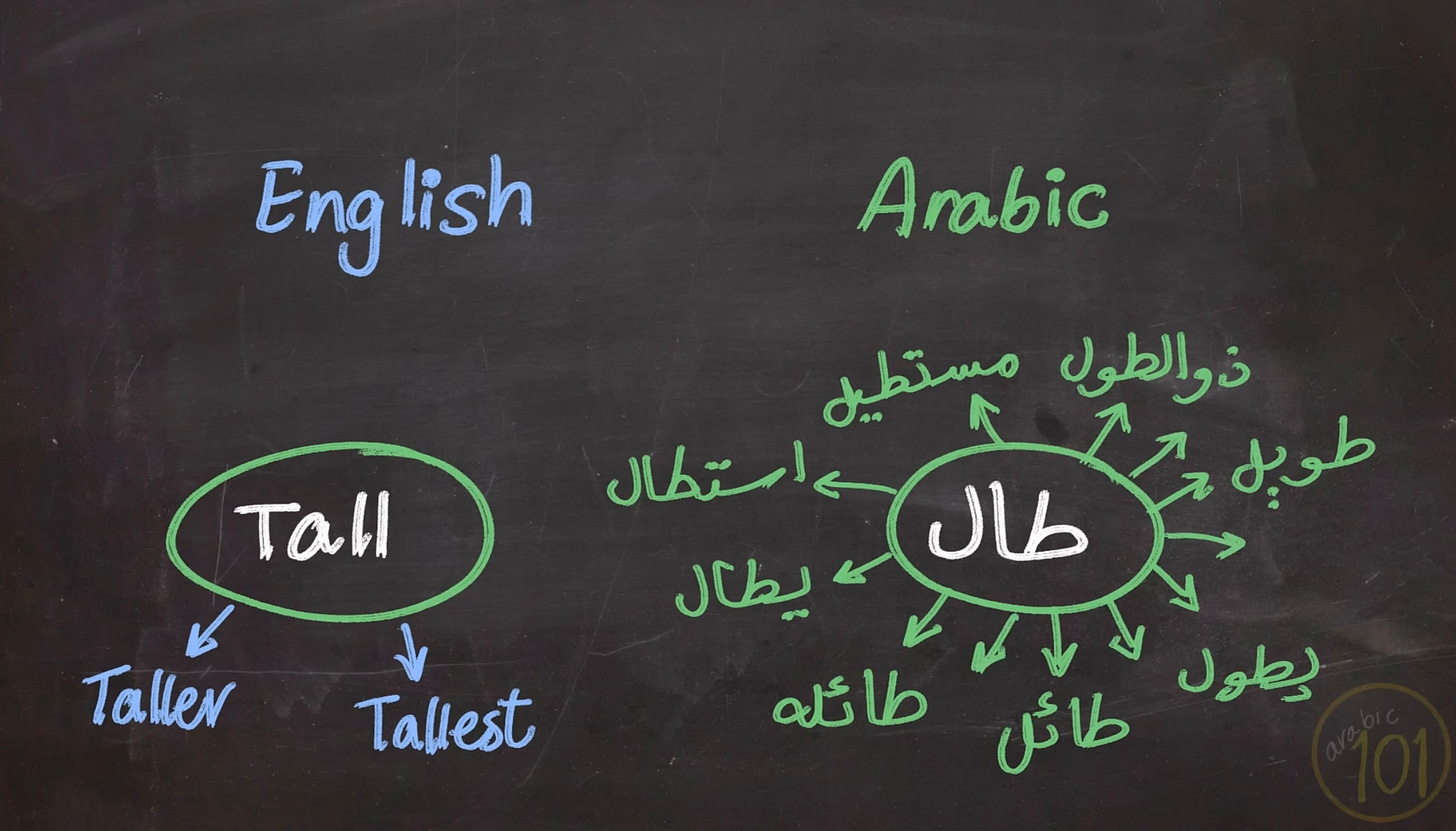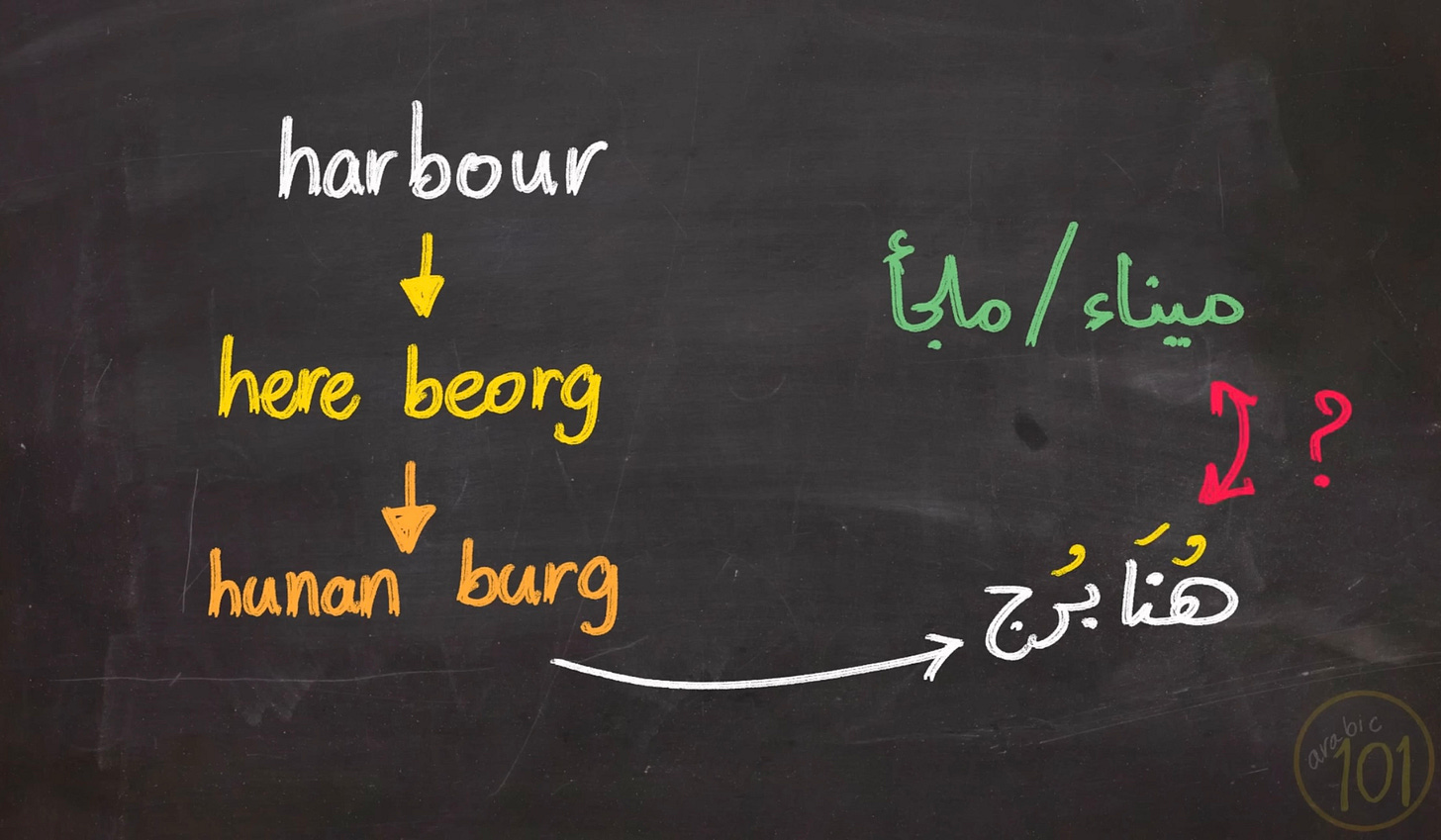Arabic's Hidden Legacy in Shaping Languages Across Time
Discover how Arabic has left its mark on the words we speak today and throughout history.
Assalamu Alaikum Everyone,
Have you ever noticed that throughout our daily lives, we suddenly encounter words with subtle but significant similarities to their Arabic Counterparts? For example, whenever we’re in the mood to not sit still, we’ll consume some sugar or سكر (Sukar). Incidents like these cannot just be a coincidence, so they leave us wondering: how much of an impact Arabic has on the modern day languages we speak today?
We might think that these Arabic influences are limited to a handful of examples, or no more than a dozen, probably words that were passed along through trade and intermingling over the years. However, when we take a deeper look, we realize that 75% of Latin roots have Arabic origins, while an astonishing 80% of Anglo-Saxon verbs come from Arabic origins.
These examples show us the numerous relationships between these words, either meaning the same thing or having very similar meanings. This makes it undeniable that these languages, in a sense, originate from the same place.
Certainly, You would ask yourself: Why would Arabic be the origin of all these languages? Why isn’t it Latin? or Anglo-Saxon?
Well, this would simply comes down to a numbers game of which language is richer in roots. A root in language is simply a verb from which a word can be derived. Latin has 800 roots, Anglo-Saxon has 2,140 roots, and Arabic has a whopping 16,505 roots. That’s significantly more in comparison. If we were to analyze this in terms of origin, the language with more roots overrides those with fewer. Let’s look at it with the analogy of a tree. In the middle of the tree, the trunk (Arabic) grows first, and as time passes, the tree grows different branches (Latin/Anglo-Saxon) off of that trunk. The branches themselves cannot be that trunk, they’ll never be as strong or as thick as the entail trunk itself.
A great example of this is how many words can be derived from certain Arabic words in comparison to certain English words. For example, lion in Arabic has 29 different names, while camel has more the 50 different names! This shows how rich Arabic as a root language can be.
You might say that we’ve only chosen specific examples and words just to prove a point and highlight similarities. It is true that there are many words that are entirely different from one another and have zero similarities. However, it’s also important to realize that languages change over time, and those changes ultimately influence the languages we are left with today.
Let us take the word harbour (or harbor for our U.S. audience). Compared to its Arabic counterpart, ميناء (mina'), it is completely different—on the surface, at least. When we look into the Anglo-Saxon/Germanic origin of the word, we are left with Hunan Burg, which has a similar sound to the Arabic phase هُنَا بُرَج (huna buraj), meaning “here is a tower.”
هُنَا بُرَج is completely different compared to ميناء, but in order to understand its relation to harbour and Hunan Burg, we must firstly take a look back to the historic landscape of the English people. Towers were built near shores in order to warn and protect themselves from Viking raids. Over time, those towers were used to guide ships into the shore, and this area became known as the harbour. While it isn’t the exact word to its Arabic counterpart, it still has its sense of Arabic origin.
If you think that just because one language is written from left to right, while another language is written from right to left, they cannot be related, consider this: language and writing are essentially two different concepts. Language is the means of communication, while writing is the visualization of a language through symbols and characters.
It is more than likely that ancient Arabic, when written, looked different than the Arabic we see today. Let’s take into account recent changes to the written Turkish language in modern history. Prior to 1928, the Turkish language used to be written with the Arabic alphabet. In order to “increase literacy” and “modernize” Turkey, the Latin/Roman alphabet was introduced and adopted. If one were to go even further back, around the 9th century, before the adoption of Islam, the Ottoman Turks used an entirely different Turkic script, unfamiliar with what we know today.
All these changes and distortions in written languages strongly emphasize the beauty and importance of The Quran being purely an audio book. It has been passed down from generation to generation through recitation without needing to be written down, preserving it through time and protecting it from alteration or corruption—ensuring its survival even if all books were to vanish or writing systems suddenly changed.
According to this theory we have been exploring, would it mean that Arabic is the first language? Did Adam (pbuh) Speak Arabic?
We can never know certainly which language Adam (pbuh) spoke, as this is part of the Unseen الغيب (Al-Ghayb). We have no authentic reports that can tell us with certainty which language he spoke. However, some say that he spoke Old Arabic, others say he spoke Syriac, which some consider an old form of Arabic. Still, others say that when Allah says in The Quran, وَعَلَّمَ ءَادَمَ ٱلْأَسْمَآءَ كُلَّهَا (And Allah taught Adam the names, all of them.) He taught him the base source of language, which has branched out into the languages we have today.
We also know that the names of the first people to ever exist sound Arabic and have unique Arabic sounds which we continue to use to this day.
What we do know for certain is that Arabic is a very old language and that it has a huge influence on many of the modern languages we speak today, in one way or another. This is either because they come from the same source, Arabic itself is the main source, or perhaps there are other reasons. These are simply theories, and there are many theories surrounding language and its development. We decided to highlight this theory today, specifically based on the solid and logical evidence provided for it. It also puts the importance of the Arabic language into context for students, while making us appreciate its history and significance.
Hopefully, this puts into perspective how Arabic can open our minds, especially regarding our connection with The Quran, and also give us a better understanding of our Deen and its magnificent history.
Jazakum Allah Khayran for reading. If you enjoyed the read, don’t forget to hit the like button and help share it with other Muslims. May we all gain in knowledge and understanding. Ameen.










Very well analysis and understandable explanation
As Salaamu Alaikum I pray all is well. This is Imam (Uncle) Samir The Director Of The International New Muslim Institute. I have always loved your teaching abilities & style. I have been Teaching New Muslims & Youth for nearly 50 years. I do a Quranic Reading Workshop taking people from 0 to Reading Hero in only 3 Days. I have been trying to reach you for some, possible collaboration. Plz contact me @ newmuslimteacher@gmail.com